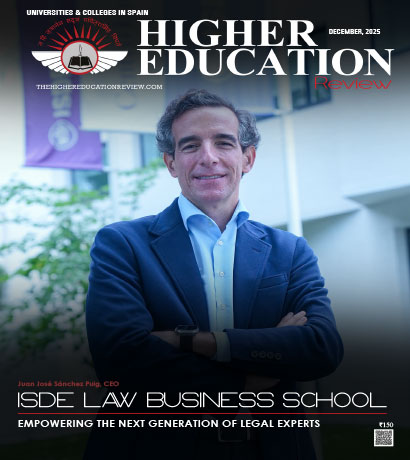Social Media Detox Strategies and Their Impact on the Well-Being of Students
 Social media has taken center stage in students' life in today's digital era. According to a survey by Statista, more than 80% of Indian internet users between the age group of 15 and 24 years are actively engaged on social media. Moreover, social media has taken over our interpersonal relationships. Several emotional and physical health problems, including exhaustion, headaches, eye strain, anxiety, memory problems, irritation and even depression, are said to arise with this digital dependency. Though the advent of social media helped in rekindling lost friendships and staying connected this has also led to an adverse side effect of overconsumption. Apart from being an excellent tool for staying updated and showcasing creativity, social media mania has led to many psychological and emotional disorders. Adopting social media detox techniques to overcome these challenges can greatly enhance students' well-being and enable them to live more mindful and balanced lives.
Social media has taken center stage in students' life in today's digital era. According to a survey by Statista, more than 80% of Indian internet users between the age group of 15 and 24 years are actively engaged on social media. Moreover, social media has taken over our interpersonal relationships. Several emotional and physical health problems, including exhaustion, headaches, eye strain, anxiety, memory problems, irritation and even depression, are said to arise with this digital dependency. Though the advent of social media helped in rekindling lost friendships and staying connected this has also led to an adverse side effect of overconsumption. Apart from being an excellent tool for staying updated and showcasing creativity, social media mania has led to many psychological and emotional disorders. Adopting social media detox techniques to overcome these challenges can greatly enhance students' well-being and enable them to live more mindful and balanced lives.
Setting Effective Time Limits
One effective approach to prevent endless scrolling on social media is to set time limits for usage. Students should set apart specific times to use social media, such as after completing homework or only during specific hours. Students can prevent procrastination, restore control over their daily schedules, and concentrate on other important matters by setting clear boundaries. This habit encourages self-control and a healthier relationship with technology.
Disable Push Notification Now
Students could get distracted and lose focus if they're getting constant updates from social media apps. Disabling unnecessary push notifications helps students focus more on their education and avoids the digital anxiety due to these interruptions. This small adjustment improves time management and helps in students stay focused, lowering the risk of burnout caused by digital overload.
Self-planned Social media breaks
Designating specific days, such as weekends, as days off from social media can encourage students to relax and partake in non-digital activities. These planned breaks reduce the exposure to online content further lowering the cognitive load. This allows students to engage in hobbies or physical activities that are essential for their mental and emotional health.
Productivity Apps to use Apps productively
Students can use productivity tools that track their social media usage and become more conscious of their habits and time spent online. These resources might help you find a balance between your leisure time on social media and your productive time spent in reading, studying, or taking up new hobbies. The only secret to this social media addiction is self-awareness but since apps are now an integral part of our lives we could use them to channel our time better.
Create Peace corners
Set aside specific areas of the house, like the study rooms, dining room, or bedroom, or most importantly while meeting friends or family, holidays as tech-free zones. We are so enamored to be connected that we are unable to live in the present moment. The peace corner enables pupils to detach from the digital world and promotes more in-person connections. Also, it improves their concentration during study time, strengthening social connections and lowering feelings of isolation that are often linked to excessive internet usage.
Let's get back to book reading and visiting Libraries
Engaging with physical books offer a valuable escape from the constant digital distractions of social media. Developing a reading habit helps enhance focus, imagination, and cognitive skills, providing a productive alternative to mindless scrolling. Libraries provide a peaceful environment where students can focus, study a variety of topics, and develop a greater passion for learning.
When encouraging social detox strategies, one needs to understand that abruptly disconnecting from social media platforms may trigger negative consequences. A sudden stop in social media usage can be counterproductive, potentially causing anxiety related to the fear of missing out, commonly known as FOMO. Therefore, a gradual approach is advisable; students can begin by taking small breaks of 1-2 hours during strategically chosen times. This method allows them to appreciate the mindfulness that comes with a digital detox.
Social media is a great place to learn, share, and exchange ideas and knowledge. Considering our evolution to mankind and inventing technologies that are ruling the world. However, we must let our core human values and brain anatomy thrive and not be enslaved by man-made technology which will lead to the destruction of our well-being.
By following these detox techniques, we can promote a generation of resilient and cognizant students who can confidently navigate the digital environment without sacrificing their well-being. Mindfulness and digital detox are not just trends; they are essential practices for surviving in the fast-paced modern world and maintaining balance.

